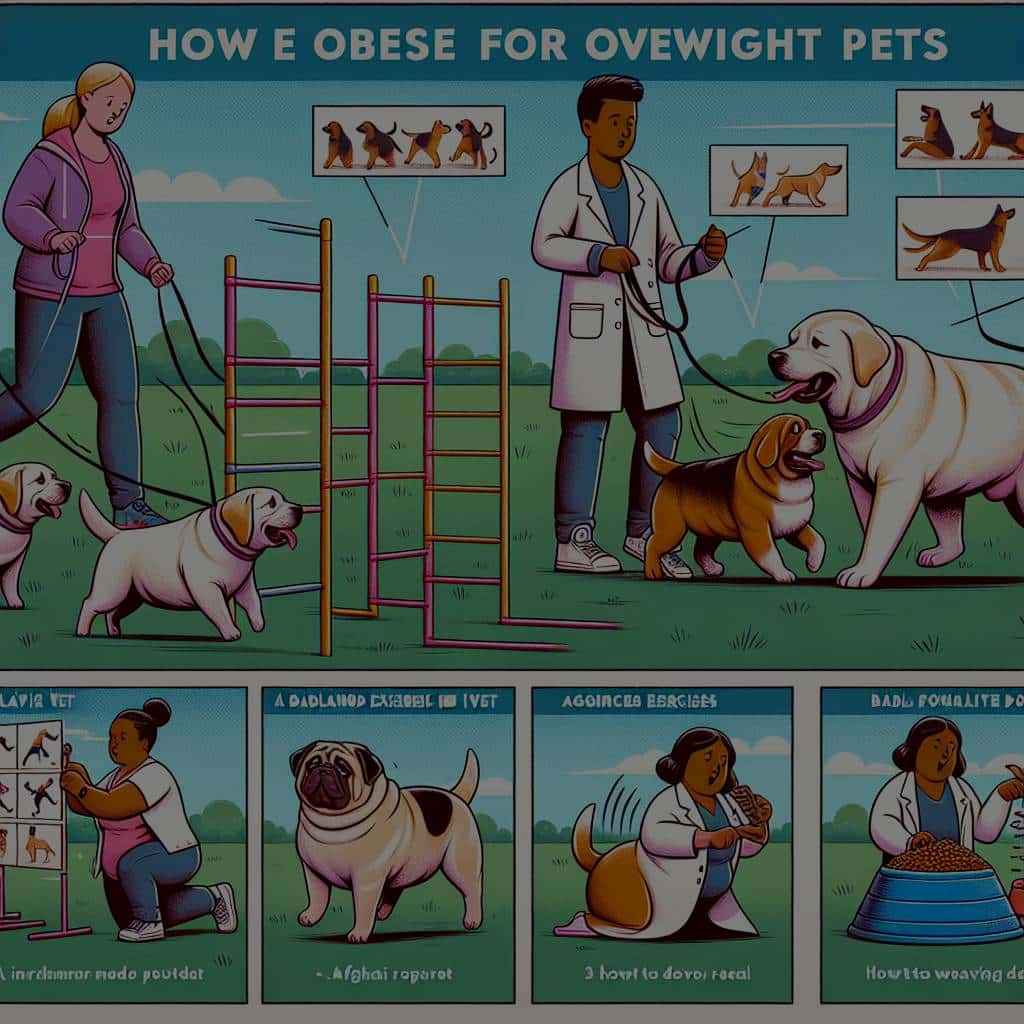Every dog owner cherishes their pet and wants only the best for them. However, sometimes, love manifests in the form of an extra treat here and there or reduced physical activity, which can lead to weight gain. According to the American Kennel Club (AKC), over half of all dogs in the United States are overweight or obese. This not only hampers their health and mobility but also shortens their lifespan. Consequently, it becomes crucial for pet owners to ensure their dogs maintain a healthy weight. This article aims to help you in this endeavor, providing you with an informative guide on creating a canine fitness routine for your overweight pets.
Understanding Your Dog’s Weight Issue
Before delving into the fitness plan, it is crucial to understand the weight issue your pet might be facing. Dog weight problems can stem from various factors, including overeating, lack of exercise, or certain health conditions. Recognizing the root cause will help you tailor the most suitable fitness routine for your dog.
Topic to read : Can You Train a Cat to Walk on a Leash in Urban Environments?
Firstly, evaluate your dog’s diet. Is your pet consuming more calories than they’re burning? If yes, then you might need to regulate their food intake or switch to a healthier diet. Consultation with a vet is advisable before making substantial changes to your pet’s diet.
Secondly, consider your dog’s activity levels. Are they getting enough exercise? Dogs, like humans, need regular physical activity to maintain a healthy weight. An overweight dog might be an indication of inadequate exercise.
Also to discover : How to Teach a Dog to Signal When It Needs to Go Outside?
Lastly, consider other health conditions. Certain diseases like hypothyroidism or Cushing’s disease can lead to weight gain in dogs. If your pet is gaining weight despite a balanced diet and regular exercise, it might be time to consult a vet.
Canine Exercise: A Key to Weight Loss
The saying, "you are what you eat" doesn’t just apply to humans. It is equally valid for our canine friends. However, food is only one part of the weight equation. Exercise is equally vital to keep your dog’s weight in check and ensure their overall health.
The first and the most straightforward exercise for your dog is walking. A good walk not only helps in weight loss but also strengthens your bond with your pet. The AKC recommends at least 30 minutes to two hours of exercise per day for dogs, depending on their age, breed, and health.
Activities like fetching, swimming, or agility training can also be a fun way to engage your dog physically. Remember, exercise should be a time of enjoyment for your pet, not a task.
Planning a Diet for Overweight Dogs
While physical activity is crucial, it won’t be as effective without proper dietary control. The diet plan should be formulated considering the dog’s breed, age, and current health status. A balanced diet for your pet is not just about reducing the food quantity but more about providing the right nutrients.
Besides reducing calorie intake, switch to dog food specially formulated for weight loss if your vet recommends. These foods are generally high in protein and fiber and low in fat.
Another effective approach is to limit treats. Treats should make up only 10% of your dog’s daily calorie intake. Also, try substituting high-calorie treats with healthier alternatives like carrots or apples.
Regular Health Checks
Regular health checks are an integral part of keeping your pet’s weight in control. These checks will help you gauge the effectiveness of the fitness routine and diet plan. Moreover, it will also help detect any underlying health conditions that might be contributing to weight gain.
Weigh your dog regularly and keep a record. If despite your efforts, their weight is not decreasing or, worse, increasing, it’s time to consult a vet. Remember, sudden weight loss is also not healthy for your pet and may indicate health issues.
Summing Up
Creating a fitness routine for your overweight pet might seem overwhelming at first, but it doesn’t have to be. It’s all about understanding your dog’s needs, providing them with balanced nutrition, ensuring they get enough exercise, and regularly checking on their health. Remember, the goal is not just weight loss, but overall health and happiness of your pet. So, take one step at a time, and you’ll surely help your furry friend live a healthier, more active life.
Incorporating Low-Impact Exercises into Your Dog’s Routine
Incorporating low-impact exercises into your dog’s fitness routine can be highly beneficial, especially for overweight dogs. These exercises are easier on the joints, and thus perfect for dogs suffering from obesity-related issues like arthritis or hip dysplasia. The goal is to help your dog lose weight without causing any further physical strain.
Swimming is a fantastic low-impact exercise that provides a full-body workout. It helps in strengthening the muscles, improving cardiovascular health, and enhancing flexibility. If your dog is uncomfortable with water, you can start with a kiddie pool, and gradually move to deeper water bodies. Remember, safety should be your utmost concern when introducing your dog to swimming. Never leave them unattended and ensure they are wearing a dog life jacket.
You could also consider dog sports like rally, nose work, or tracking, which are not only physically stimulating but also mentally engaging. These sports require your dog to use not just their body but also their brain, making them a comprehensive workout.
However, it’s important to bear in mind that not all dogs will be able to do all exercises, and what works for one might not work for another. Always keep your dog’s health condition, breed, and preferences in mind when deciding on the exercises. Moreover, remember that consistency is the key to a successful dog fitness routine.
Monitoring your Dog’s Progress
As you embark on this journey of weight loss with your dog, monitoring their progress is crucial. This will not only help you know if the diet and exercise routine is working but also ensure you’re moving at a healthy pace.
Keep a regular track of your dog’s body weight. However, don’t rely solely on the scale. Pay attention to their body condition as well. You should be able to feel your dog’s ribs without pressing too hard, and they should have a discernible waist when viewed from above. If your dog is losing weight but still doesn’t have these features, it may be an indication that they need more exercise or a different diet.
It’s also important to observe your dog’s energy levels and demeanor. Do they seem more active and happy since you started the fitness routine? Or are they lethargic and unenthusiastic? Always remember, the goal is not just to help your dog lose weight but to improve their overall health and happiness.
Conclusion: Creating a Canine Fitness Routine
Helping your dog lose weight might seem like a daunting task, but with a thoughtful and consistent approach, it can be achieved. Creating a canine fitness routine involves understanding your dog’s health condition, planning a balanced diet, incorporating appropriate exercises, and regularly monitoring their progress.
It’s important to be patient and take one step at a time. Don’t push your dog too hard, and always prioritize their comfort and safety. The goal is not only to help your dog lose weight but to enhance their overall wellbeing.
Remember, every pet is unique, and what works for one might not work for another. Therefore, always tailor the diet and exercise routine as per your dog’s needs and preferences. Don’t hesitate to consult a vet if you’re unsure or if your dog’s condition doesn’t improve.
In the end, your efforts will be rewarded with a fitter, healthier, and happier pet. And isn’t that what every pet owner ultimately wants?






